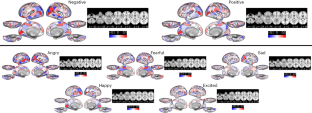2023-06-08 ワシントン大学セントルイス校
◆5歳から15歳の何百人もの子供の脳のスキャンを調査した結果、子供の脳が感情の手がかりを処理する方法は通常、学齢期になるとほぼ確定的に形成されることが分かりました。そして思春期になると、そのような脳活動は仲間の脳が感情の手がかりを処理する方法と類似するようになります。
◆この研究は、子供が他人の感情の手がかりを読み取る上で問題を抱える場合に介入する最適な時期は早い段階であることを裏付ける追加の証拠を提供しています。学校に通う前でも早い段階で対処する必要があります。
◆この研究は、2023年6月8日に『Nature Neuroscience』誌に掲載されました。
<関連情報>
- https://medicine.wustl.edu/news/childrens-brain-scans-provide-clues-to-processing-of-emotional-cues/
- https://www.nature.com/articles/s41593-023-01358-9
感情概念の大規模な符号化は、幼少期から青年期にかけて個人間でますます類似していく Large-scale encoding of emotion concepts becomes increasingly similar between individuals from childhood to adolescence
M. Catalina Camacho,Ashley N. Nielsen,Dori Balser,Emily Furtado,David C. Steinberger,Leah Fruchtman,Joseph P. Culver,Chad M. Sylvester & Deanna M. Barch
Nature Neuroscience Published:08 June 2023
DOI:https://doi.org/10.1038/s41593-023-01358-9

Abstract
Humans require a shared conceptualization of others’ emotions for adaptive social functioning. A concept is a mental blueprint that gives our brains parameters for predicting what will happen next. Emotion concepts undergo refinement with development, but it is not known whether their neural representations change in parallel. Here, in a sample of 5–15-year-old children (n = 823), we show that the brain represents different emotion concepts distinctly throughout the cortex, cerebellum and caudate. Patterns of activation to each emotion changed little across development. Using a model-free approach, we show that activation patterns were more similar between older children than between younger children. Moreover, scenes that required inferring negative emotional states elicited higher default mode network activation similarity in older children than younger children. These results suggest that representations of emotion concepts are relatively stable by mid to late childhood and synchronize between individuals during adolescence.


